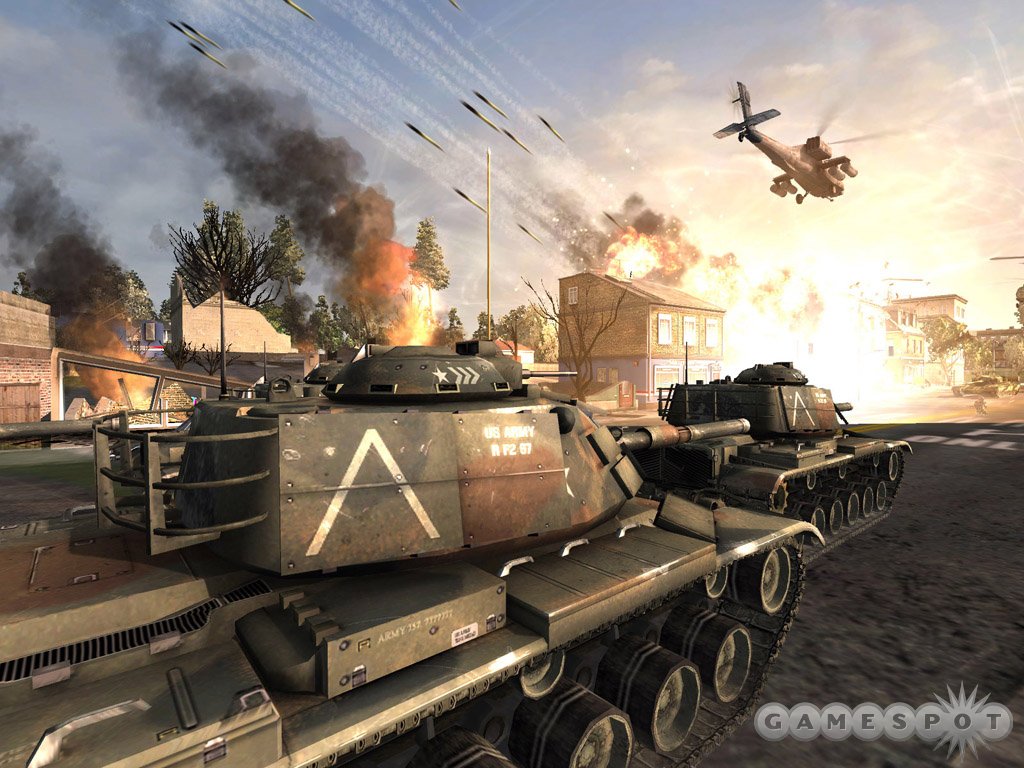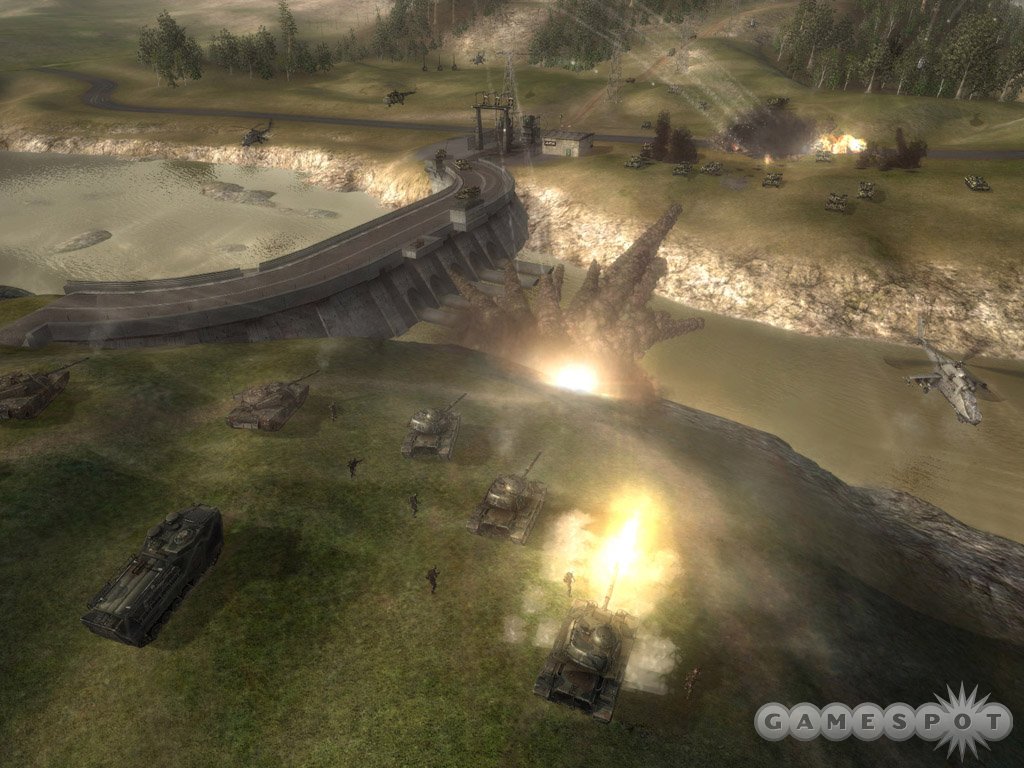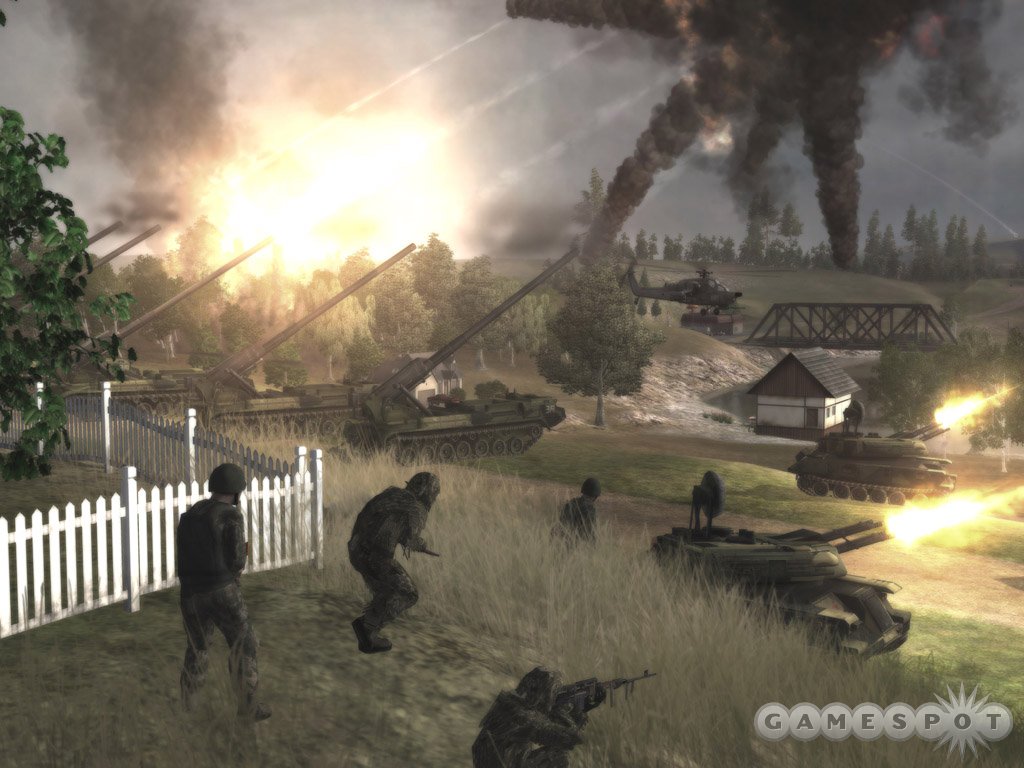World in Conflict Exclusive Q&A - Massive Unveils Its Newest Real-Time Strategy Game
Lead game designer Magnus Jansén gives us the first details on Massive Entertainment's next real-time strategy game, which depicts the Cold War gone hot.
Most real-time strategy games are set in either World War II or some sci-fi or fantasy setting. Unfortunately, this manages to avoid one of the most interesting conflicts of recent times, the Cold War. When you think about it, the Cold War is an excellent setting for a military-themed real-time strategy game, as the Western democracies and the Communist bloc faced off with huge armies, navies, and air forces. Now the Cold War is going to be the setting of Massive Entertainment's next game, World in Conflict. Massive is best known for the two Ground Control games, but now the Swedish development studio is switching from sci-fi to historical reality. The game looks incredible, and we have the exclusive first details on World in Conflict here, straight from Magnus Jansén, the lead game designer himself. World in Conflict will ship in the spring of 2007.

GameSpot: Give us a brief overview of World in Conflict.
Magnus Jansén: World in Conflict is a late-Cold War real-time strategy game with a strong focus on unit tactics, action, team play, and destruction. Players take on a specific role commanding air, armor, infantry, and support units to form a combined arms force against the enemy. By controlling key strategic points on the map, you sway the battle in your favor. There is no resource-gathering, so every second not spent fighting the enemy over a piece of land is a second wasted.
GS: Massive is known for its futuristic, sci-fi games, so why did the team choose such a different setting for the new game?
MJ: It was time for a non-sci-fi setting, and, in terms of military hardware, the team really wanted to work with modern-day units. We also looked for a scenario that offered balanced factions, so we traveled back in time a few years to the era of multiple superpowers.
GS: Can you tell us about what kinds of armies and technologies will be available to players in the game? Will players be using mostly real-world weaponry and vehicles (rifles, machine guns, tanks, fighter jets), or will there be other experimental or sci-fi weaponry?
MJ: It will be 100 percent real-world stuff. If it's cool and it existed in 1989, there is a good chance it's in the game. Hell, if it isn't, it should be!

GS: The Ground Control games did an excellent job of encouraging players to use varied armed forces (instead of using nothing but the same kind of tank to win, for instance). How important will use of combined forces (infantry, vehicles, artillery, and so on) be to winning battles? How will the game encourage varied tactics?
MJ: Combining air, armor, infantry, and support is key. The team with the most coordinated effort will be the victor. And picking a role and sticking with it isn't always the solution, either. Sometimes you will want to change your tactics mid-game as the battlefield changes. Infantry, for instance, is at its peak when they can hide in forests and houses, so when all cover has been incinerated you may wish to change roles.
GS: What can you tell us about the game's resource model, if any? Will World in Conflict follow the Ground Control series' focus on using existing armies and commissioning new troops, or will there be actual resources that need to be mined and hoarded?
MJ: The only things you harvest are enemy casualties. Each combatant has a fixed amount of resources to spend on hardware, and it's the skill employed in wielding those resources that determines the outcome of the battle. The resource pool remains equal for all players during the entire game.
GS: Tell us about the game's single-player modes--what kind of campaign(s) will be available? What other single-player modes will be in the game (historical battles, skirmishes, and so on)?
MJ: We're not talking too much about single-player yet. But the single-player campaign follows a young American officer throughout the war effort, and we've worked very hard to make the campaign more than just a linear string of skirmish maps. That much I can tell you.
GS: What can you tell us about World in Conflict's multiplayer modes? Aside from head-to-head competition, are there any plans for cooperative play modes, or perhaps a multiplayer version of a longer-term, persistent campaign mode that will require more than one play session to finish?

MJ: We have some different variations on the main game mode, but we've tried to keep it believable so there will be no "capture the nuke"-type modes (even though I'm sure someone will eventually make a mod named just that, just to show us…). There are no long cooperative endeavors to embark on, but you can play with a friend against computer opponents on select maps.
GS: Finally, is there anything else you'd like to add about World in Conflict?
MJ: Well, I really like our next-generation Massgate technology. You will not want to wrestle with sluggish and contrived server browsers ever again after trying out what we are doing with Massgate! It really is online multiplayer browsing done right.
GS: Thank you, Magnus.
Got a news tip or want to contact us directly? Email news@gamespot.com
Join the conversation